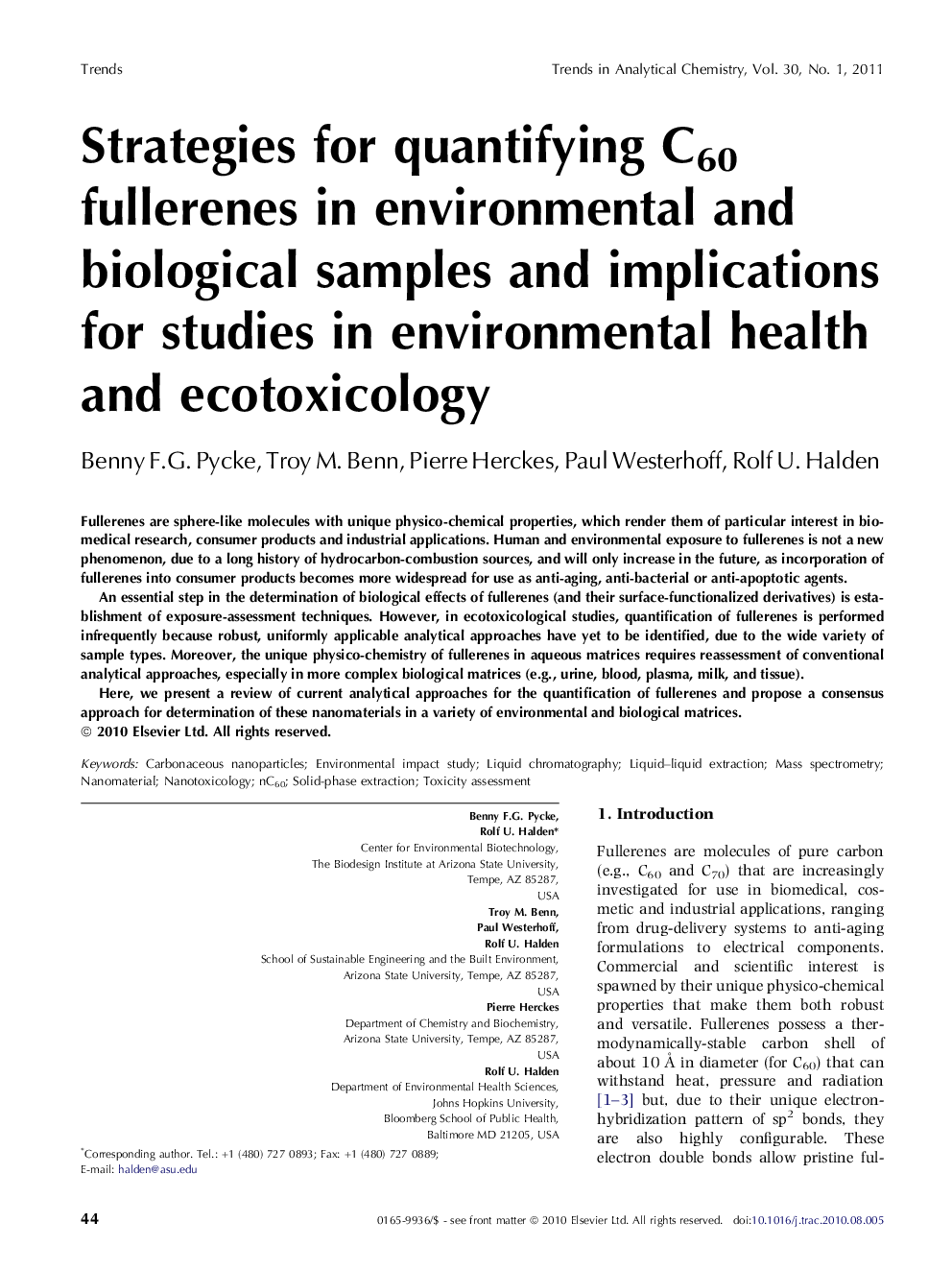| کد مقاله | کد نشریه | سال انتشار | مقاله انگلیسی | نسخه تمام متن |
|---|---|---|---|---|
| 1249283 | 970612 | 2011 | 14 صفحه PDF | دانلود رایگان |

Fullerenes are sphere-like molecules with unique physico-chemical properties, which render them of particular interest in biomedical research, consumer products and industrial applications. Human and environmental exposure to fullerenes is not a new phenomenon, due to a long history of hydrocarbon-combustion sources, and will only increase in the future, as incorporation of fullerenes into consumer products becomes more widespread for use as anti-aging, anti-bacterial or anti-apoptotic agents.An essential step in the determination of biological effects of fullerenes (and their surface-functionalized derivatives) is establishment of exposure-assessment techniques. However, in ecotoxicological studies, quantification of fullerenes is performed infrequently because robust, uniformly applicable analytical approaches have yet to be identified, due to the wide variety of sample types. Moreover, the unique physico-chemistry of fullerenes in aqueous matrices requires reassessment of conventional analytical approaches, especially in more complex biological matrices (e.g., urine, blood, plasma, milk, and tissue).Here, we present a review of current analytical approaches for the quantification of fullerenes and propose a consensus approach for determination of these nanomaterials in a variety of environmental and biological matrices.
Journal: TrAC Trends in Analytical Chemistry - Volume 30, Issue 1, January 2011, Pages 44–57